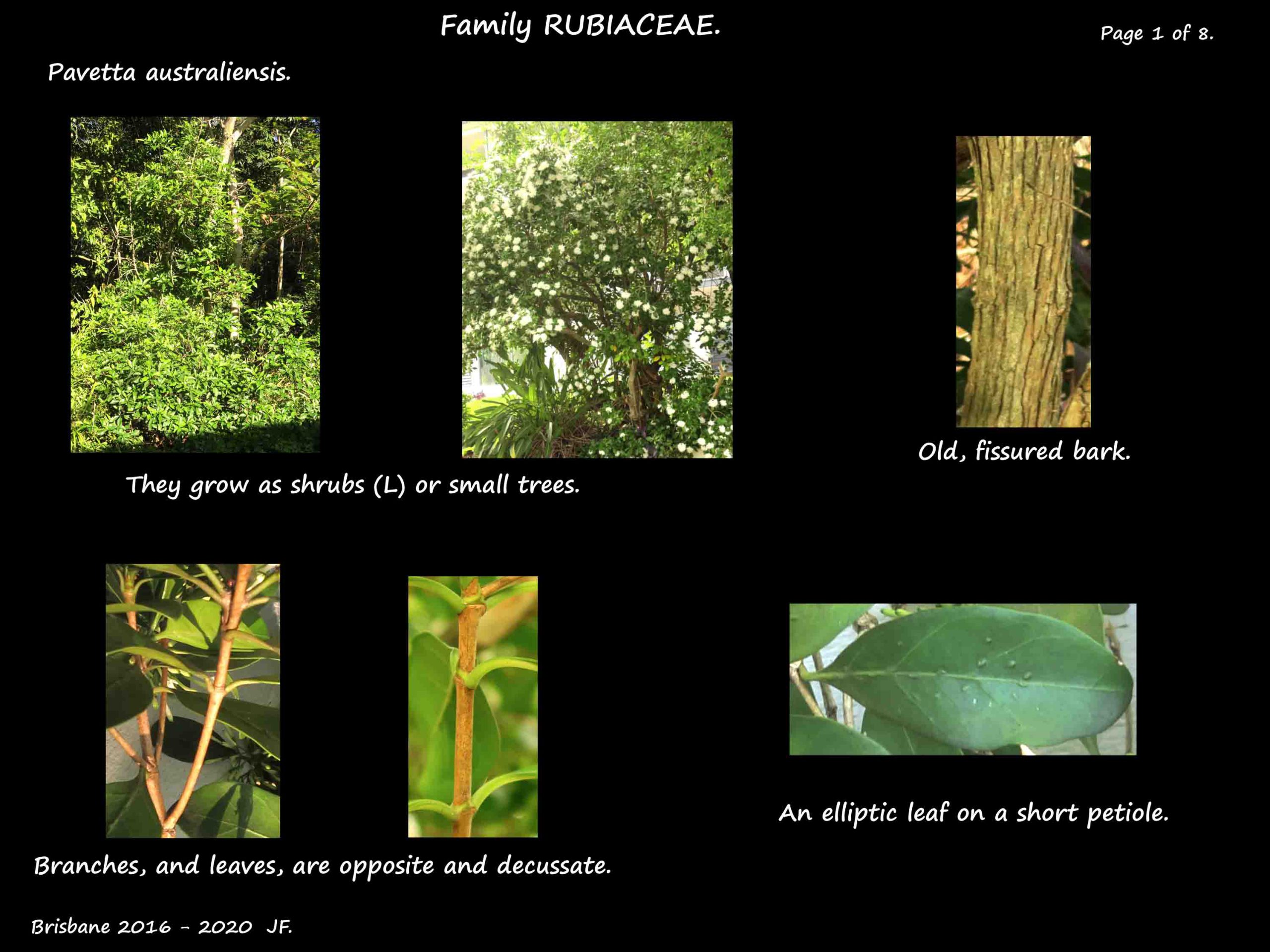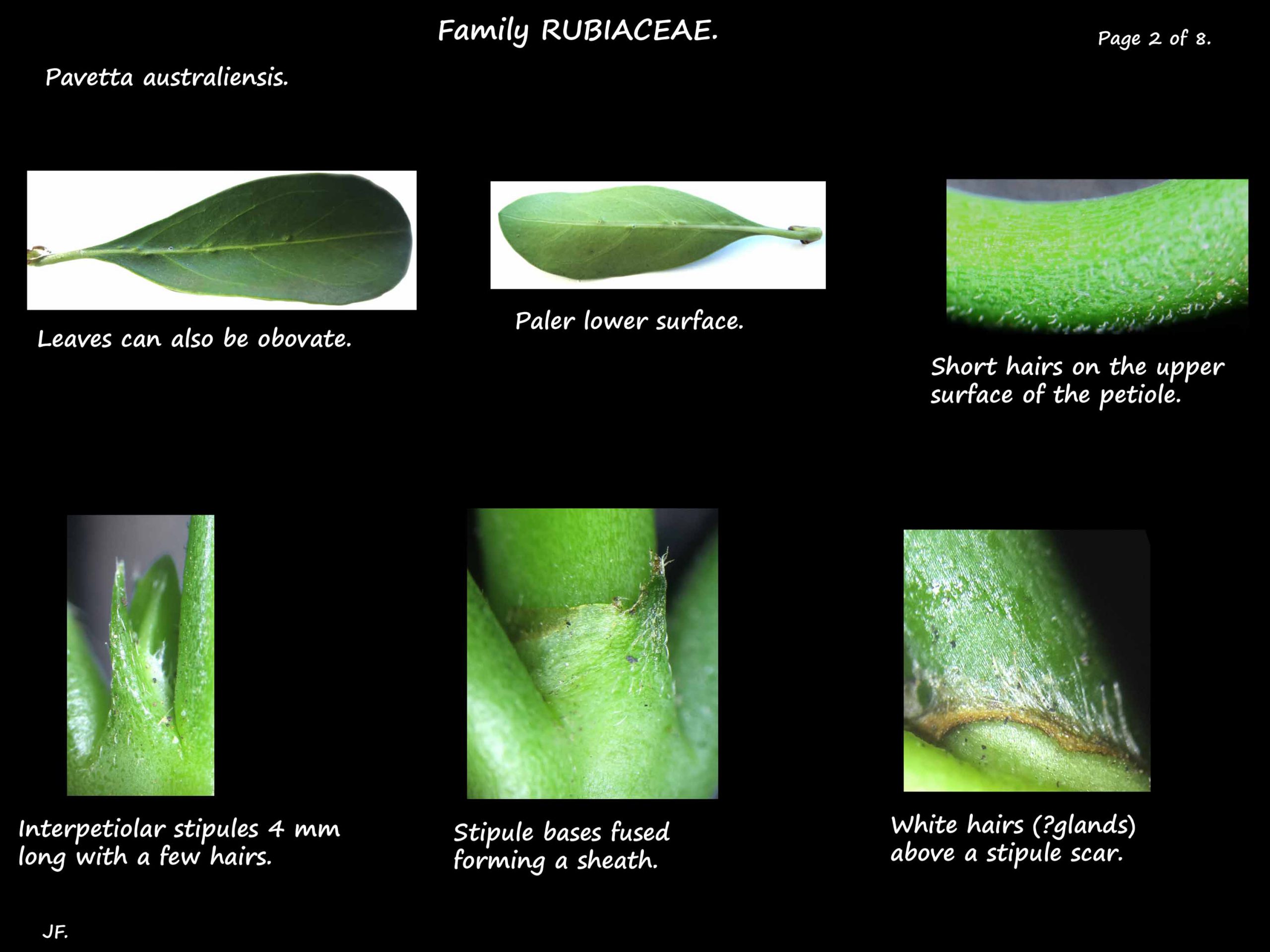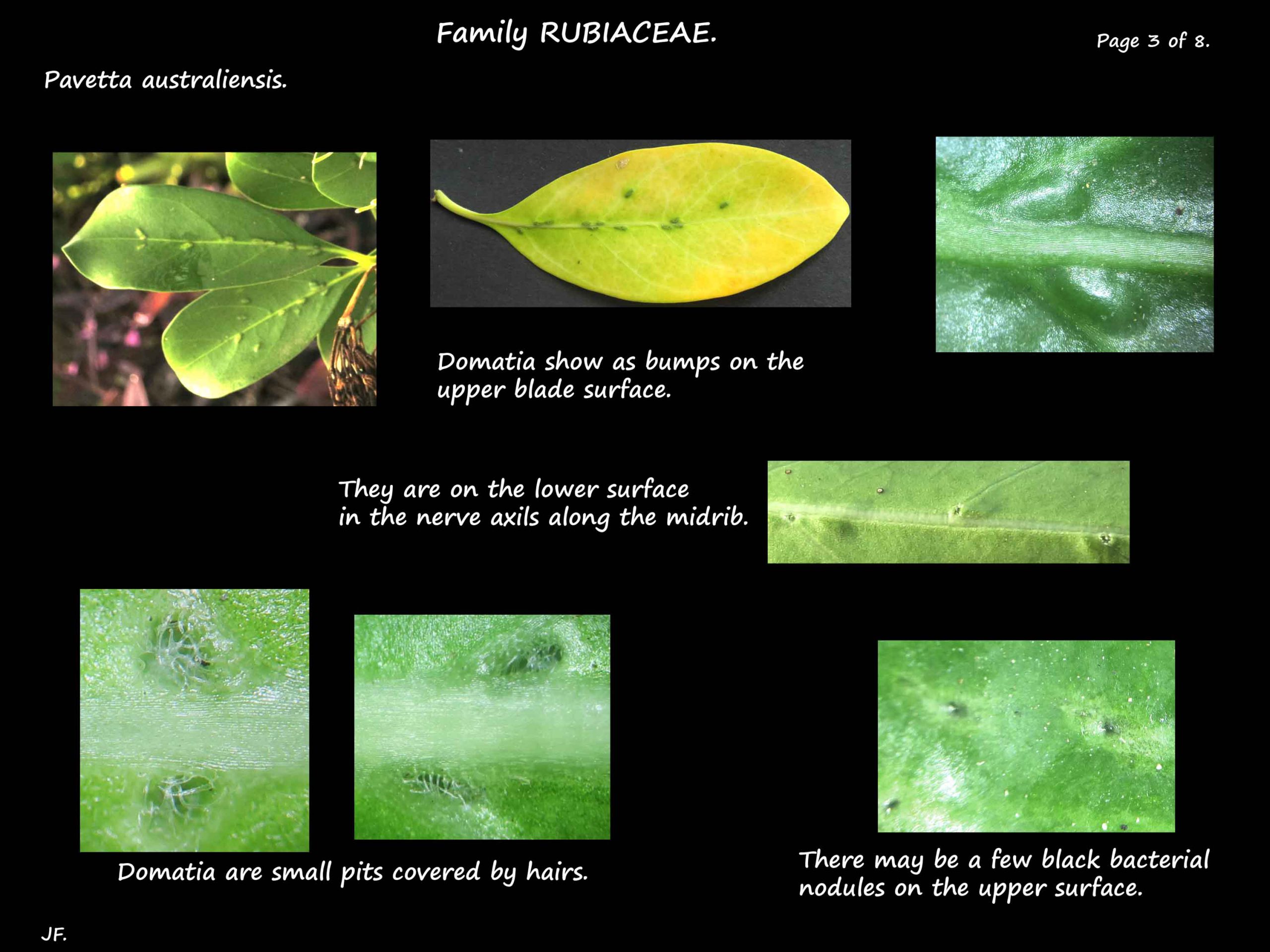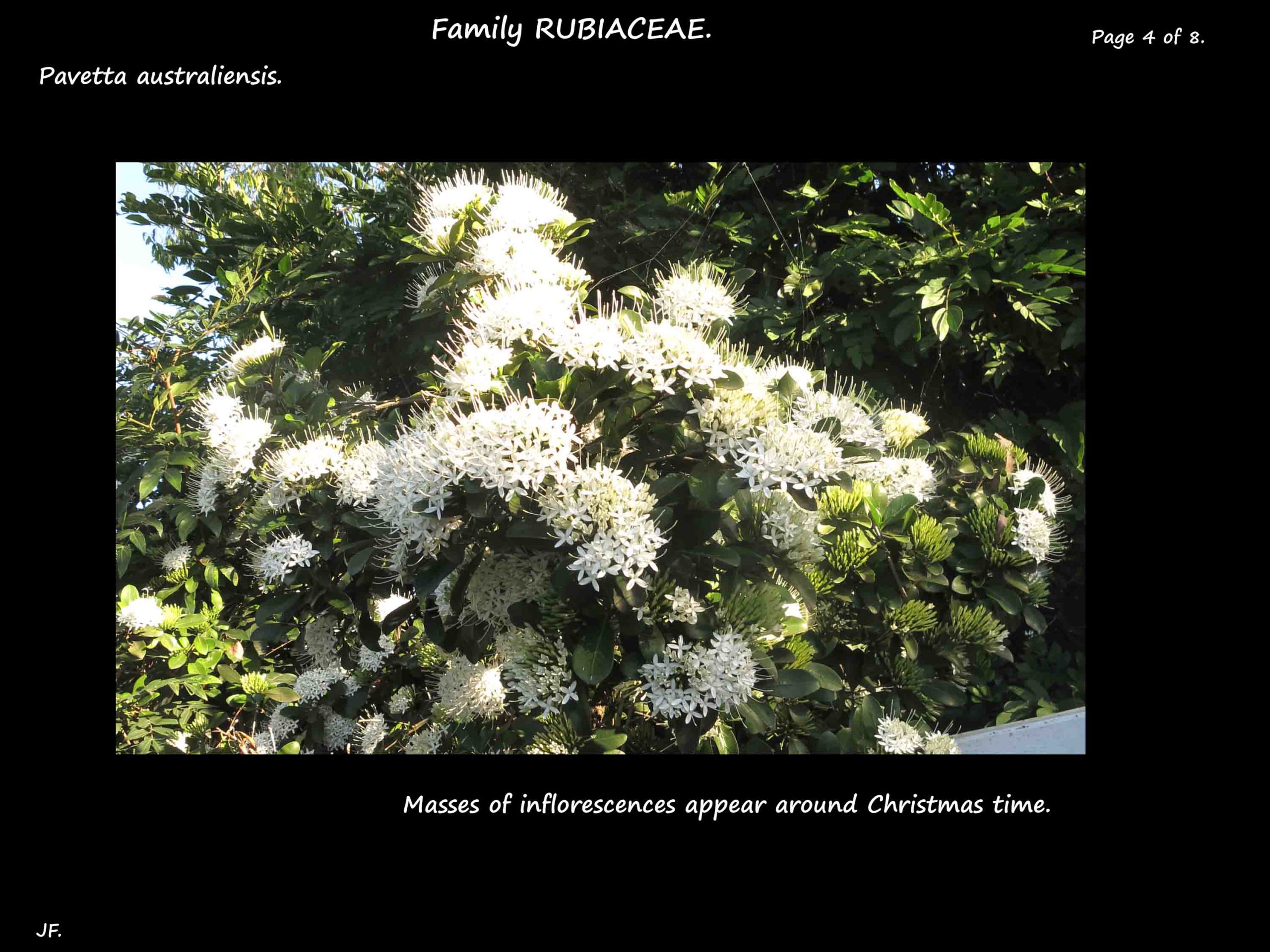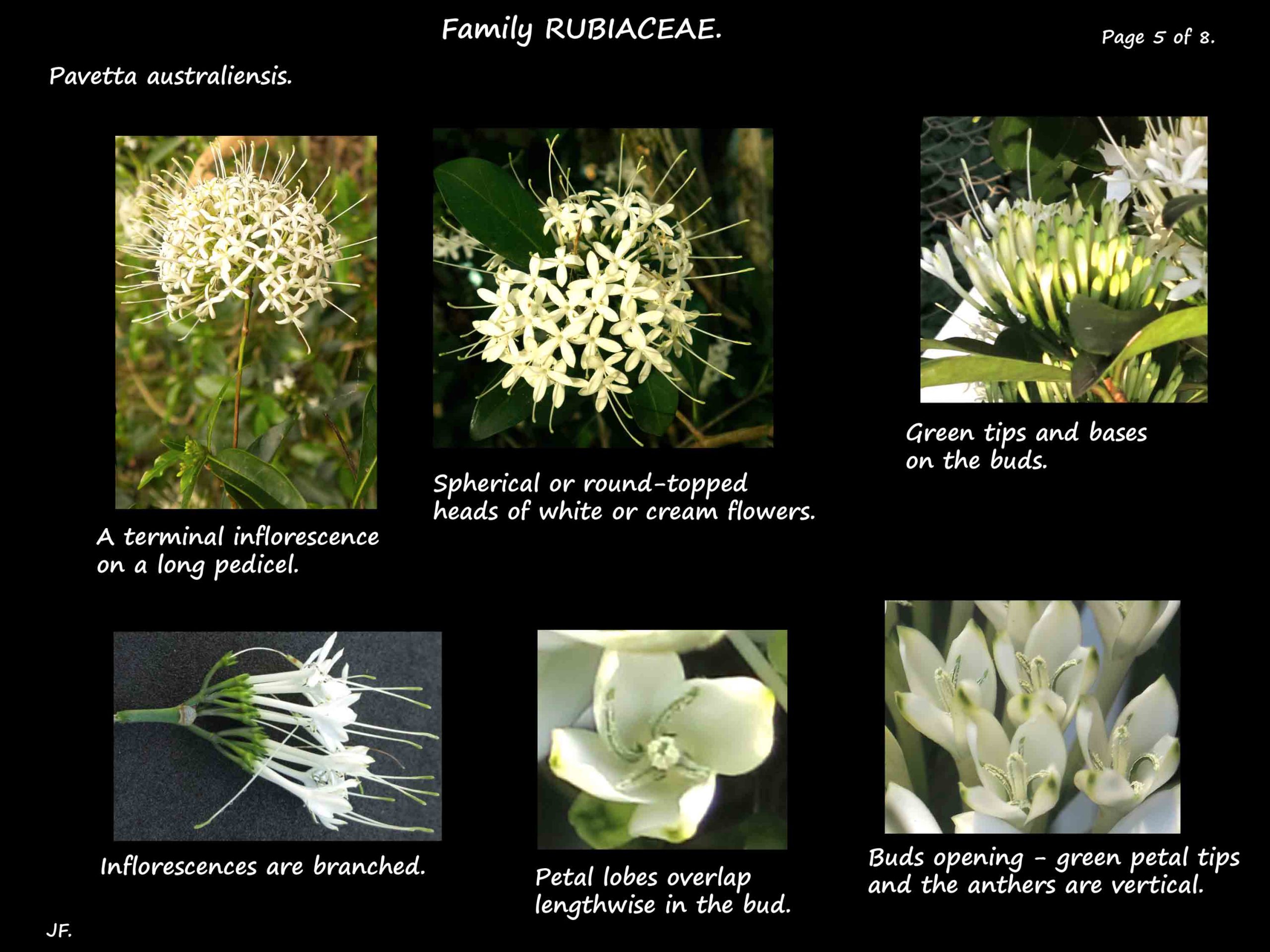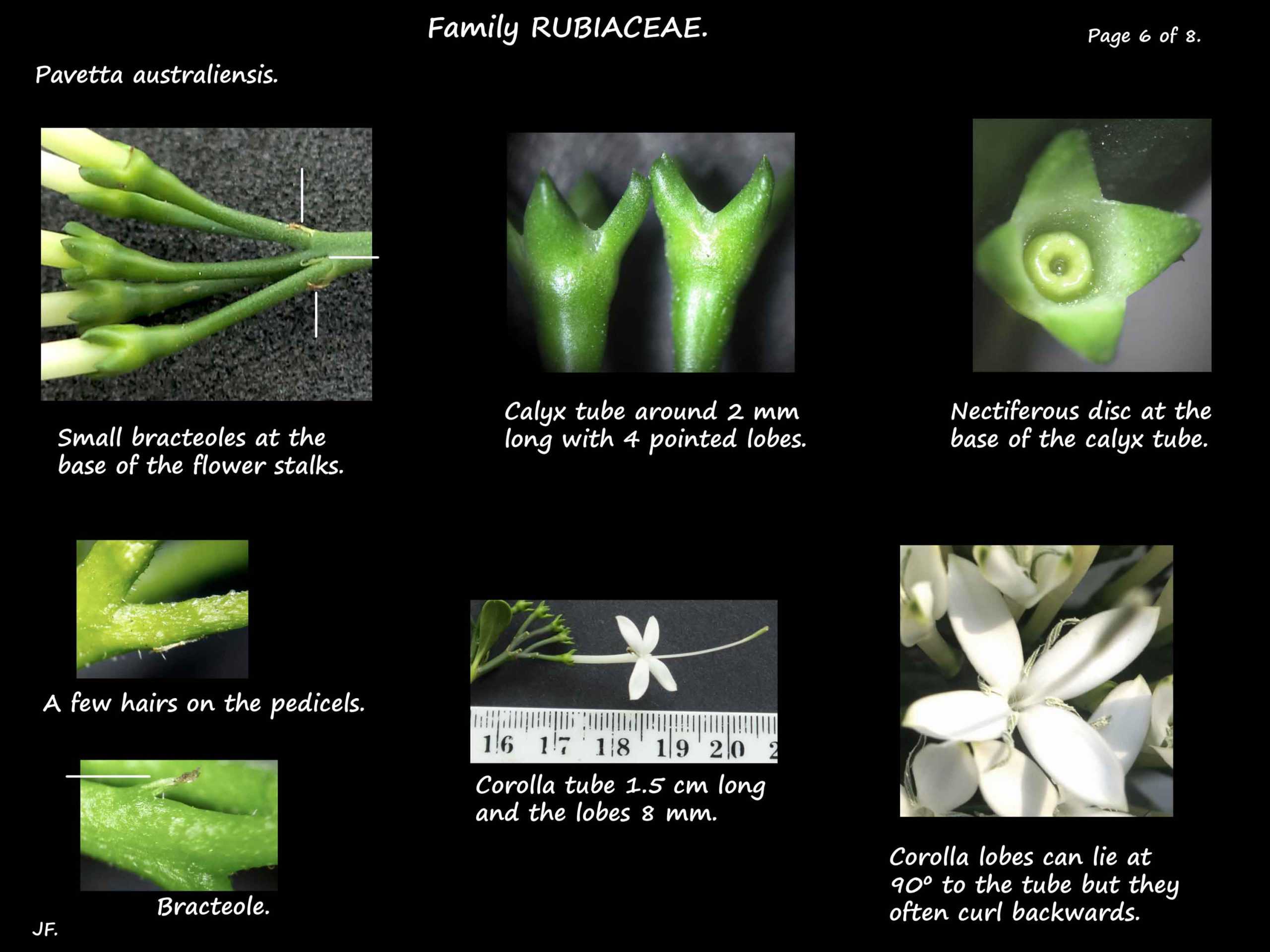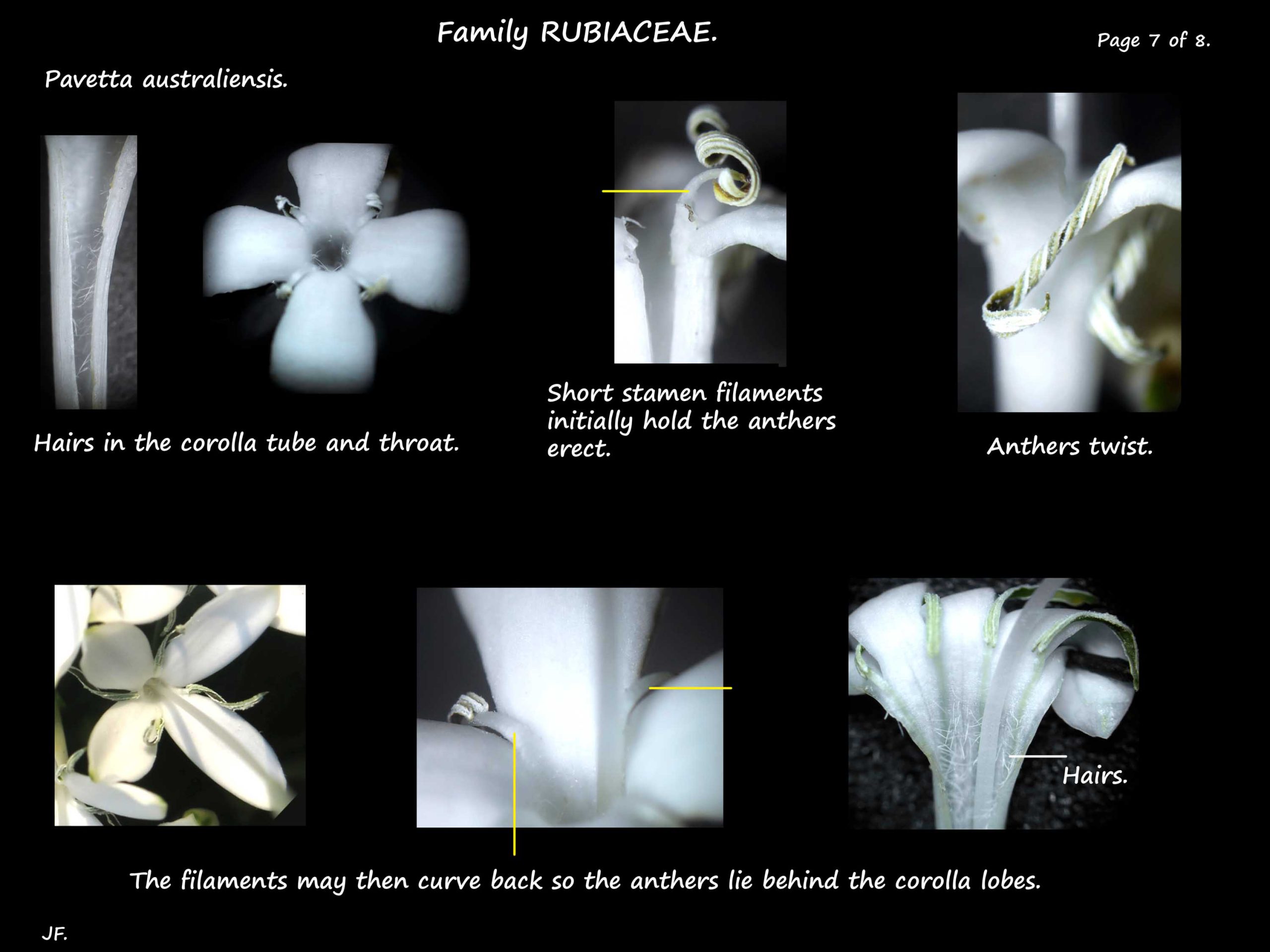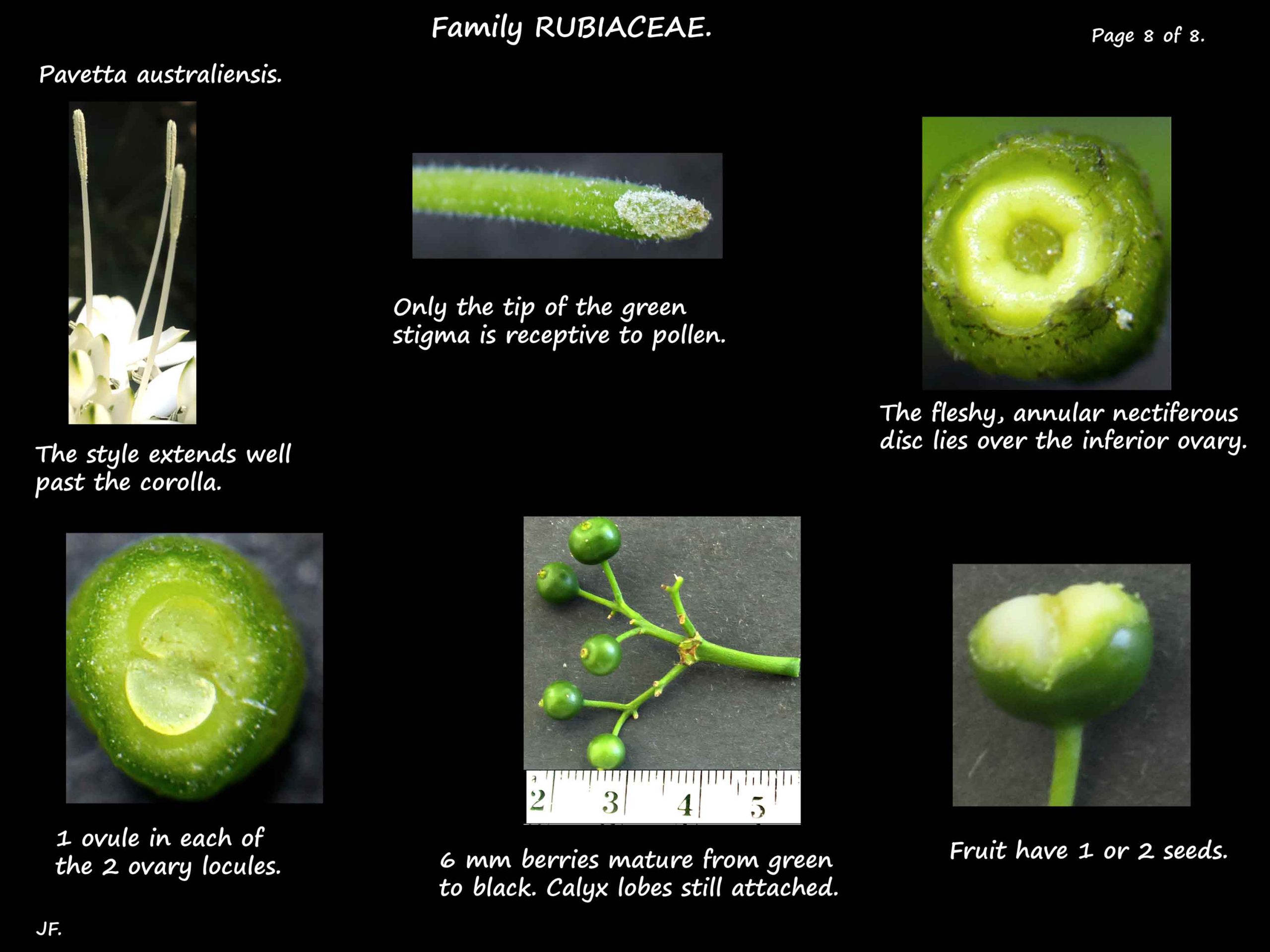Pavetta australiensis.
In Family Rubiaceae they are found in S.E. Queensland and north-eastern N.S.W.
The Pavetta or Butterfly bush is common in cultivation.
They are shrubs or small trees up to 5 m high.
Small twigs have white hairs but older ones are smooth.
Branches, and leaves, are both arranged in an opposite and decussate fashion.
The leaves are on petioles up to 2 cm long.
They are up to around 15 cm long and from 2 to 6 (9) cms wide.
The blades can be elliptic, narrowly elliptic, obovate or oblanceolate.
The tip can be round or pointed and the base commonly tapers.
The veins, paler than the blade, are depressed on the upper surface.
There are 2 interpetiolar stipules each with 2 pointed tips.
The bases of the stipules are fused forming a sheath around the stem.
The terminal inflorescences are held above the leaves.
They are round-topped heads and the larger ones are spherical.
Each flower is on a stalk 5 to 10 mm long.
The bracts are fused forming a sheath around the inflorescence stalk or peduncle.
There are also small bracteoles under the individual flowers.
The white flowers have parts in 4’s.
The calyx tube is around 2 mm long with small teeth on the rim.
The cylindrical corolla tube is up to 1.5 cm long with lobes around 6 mm long.
The lobes flare out then later curl backwards.
There are white hairs in the corolla tube.
The stamens insert into the top of the corolla tube between the lobes.
Initially the filaments are uptight and the 4 mm long anthers straight.
The filaments then bend back and the anthers twist.
Eventually the anthers lie between and posterior to the corolla lobes.
An annular nectiferous disc lies over the inferior ovary.
The ovary has 2 locules each with 1 ovule.
The white style, around 3 cm long, extends well past the corolla.
Mature fruit are a spherical black berry around 6 mm wide.
The calyx lobes remain attached.
Each fruit has 2 hemi-spherical seeds.
J.F.
